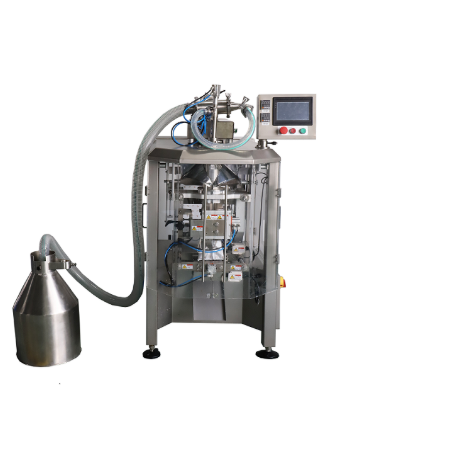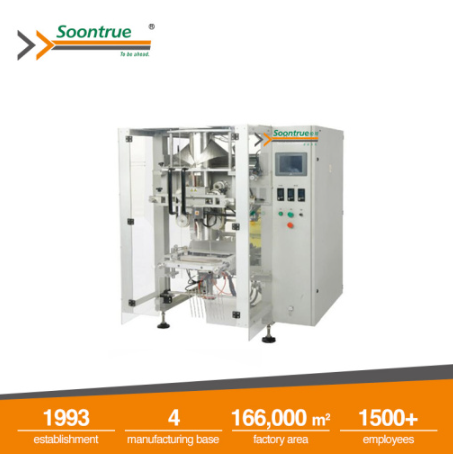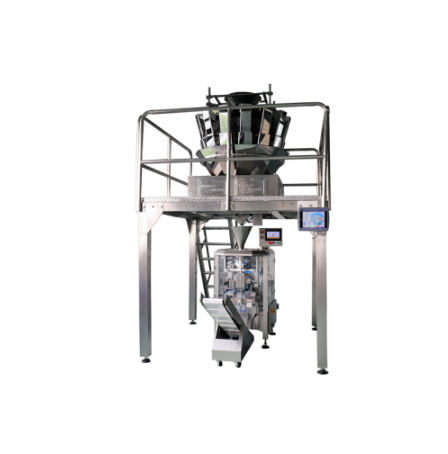How Vertical Packing Machines Reduce Packaging Waste and Improve Speed
In modern manufacturing, efficiency and sustainability are critical for maintaining competitiveness. One area where factories can make a significant impact is packaging. Vertical packing machines—also known as vertical form fill seal (VFFS) machines—are widely used in industries such as food, beverage, pharmaceuticals, and consumer goods. These machines are specifically designed to improve production speed, reduce material waste, and ensure precise, consistent packaging.
By automating the packaging process, vertical packing machines not only save labor costs but also optimize the use of packaging materials. This article explores how vertical packing machines help reduce packaging waste, enhance production speed, and why companies should consider integrating them into their production lines.
Efficient Material Usage
One of the primary ways vertical packing machines reduce waste is through precise control over packaging material. Unlike manual or semi-automatic methods, these machines use:
- Pre-measured packaging rolls that ensure every bag or pouch is filled with exact quantities.
- Servo-driven sealing systems that minimize excess film usage and reduce bag overhang.
- Optimized bag length adjustments for different product volumes and sizes.
By controlling every aspect of the packaging material, factories can significantly reduce scrap, saving both money and resources. For companies handling high-volume products like snacks, powders, or liquids, this can lead to a substantial reduction in operational costs.
Faster Production Speed
Vertical packing machines are engineered for speed without compromising quality. Advanced models can produce 200–500 bags per minute, depending on the product type and packaging material. Key factors that contribute to higher production speeds include:
- Automated feeding systems that reduce manual handling.
- Continuous motion sealing jaws that speed up the sealing process.
- Integrated product weighing or filling systems that eliminate bottlenecks.
By reducing the time required for each packaging cycle, factories can increase throughput, meet higher demand, and respond quickly to seasonal or promotional production spikes.
Consistent Packaging Quality
Inconsistent packaging can lead to material waste, product damage, and customer complaints. Vertical packing machines ensure that every package is consistent in weight, size, and seal quality. Features that contribute to consistent quality include:
- Precision dosing systems for powders, liquids, and granular products.
- High-accuracy sealing systems that prevent leakage and spoilage.
- Automatic film tracking and alignment to prevent misaligned or wrinkled packaging.
Consistent packaging reduces defective products and minimizes the need for rework, further reducing material waste.
Adaptable for Multiple Products
Many factories handle a variety of products with different shapes, sizes, and packaging requirements. Modern vertical packing machines are highly versatile:
- Adjustable bag length and width for different products.
- Interchangeable filling heads for liquids, powders, granules, or solids.
- Compatibility with various packaging materials including laminated films, biodegradable films, and aluminum foils.
This flexibility allows factories to use a single machine for multiple product lines, reducing the need for additional equipment and preventing excess inventory or material waste.
Integration with Automatic Packing Lines
Vertical packing machines can be integrated with flow wrap machines, case erectors, and automatic packing systems to form a seamless production line. Integrated systems provide several advantages:
- Synchronized operation ensures continuous product flow and minimizes downtime.
- Automated stacking and case packing reduces manual labor and handling errors.
- Data connectivity allows monitoring of production performance and material usage.
By combining vertical packing machines with other automated systems, factories can achieve higher efficiency and lower waste across the entire packaging process.
Sustainability Benefits
Reducing packaging waste not only lowers costs but also supports environmental sustainability. Vertical packing machines contribute to greener production by:
- Using precisely measured film to reduce excess plastic.
- Allowing recyclable or biodegradable films to be processed efficiently.
- Minimizing product rejections due to packaging errors.
Factories adopting vertical packing machines can not only improve operational efficiency but also enhance their corporate social responsibility profile.
Why Soontrue Vertical Packing Machines Are a Smart Choice
When choosing a vertical packing machine, reliability, versatility, and efficiency are key. Soontrue offers a range of vertical packing machines designed to meet the needs of modern factories:
- High-speed operation for both granular and liquid products.
- Versatile design compatible with various film types and bag sizes.
- Easy integration with full automatic packing systems, including flow wrappers and case erectors.
- Low maintenance and energy-efficient operation, ensuring long-term cost savings.
With years of experience in automatic packing systems, flow wrap machines, vertical packing machines, and carton machines, Soontrue provides solutions that help factories reduce waste, increase speed, and improve overall productivity.
Conclusion
Vertical packing machines are essential for factories aiming to enhance efficiency, minimize packaging waste, and maintain consistent product quality. By leveraging precise material usage, high-speed operation, adaptable designs, and integration with automatic packing systems, manufacturers can achieve significant cost savings while meeting sustainability goals.
Investing in a modern vertical packing machine—such as those offered by Soontrue—is a practical step toward optimizing production lines, reducing material waste, and improving overall packaging speed. For businesses in the food, pharmaceutical, or consumer goods sectors, vertical packing machines are a vital tool for maintaining competitiveness in today’s fast-paced market.





